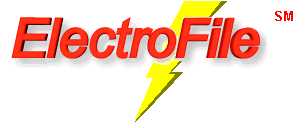
5200 W Market St
Greensboro, NC 27409
336-852-9505
 Terry Hough
Terry Hough
President

|
Income Tax Service
5200 W Market St Greensboro, NC 27409 336-852-9505 |
 Terry Hough
Terry Hough
President |
I'm passing along a tip published today by the IRS for the general public. I believe it is the best written tip I have ever seen them do. And it is certainly timely! Be sure to discuss this with your ElectroFile Tax Preparer.
Available in one form or another since the mid-1970s, individual retirement arrangements (IRAs) are designed to enable employees and self-employed people to save for retirement. Contributions to traditional IRAs are often deductible, but distributions, usually after age 59Ĺ, are generally taxable. Though contributions to Roth IRAs are not deductible, qualified distributions, usually after age 59Ĺ, are tax-free. Those with traditional IRAs must begin receiving distributions by April 1 of the year following the year they turn 70Ĺ, but there is no similar requirement for Roth IRAs.
Most taxpayers with qualifying income are either eligible to set up a traditional or Roth IRA or add money to an existing account. To count for 2014, contributions must be made by April 15, 2015. In addition, low- and moderate-income taxpayers making these contributions may also qualify for the saverís credit when they fill out their 2014 returns.
Eligible taxpayers can contribute up to $5,500 to an IRA. For someone who was at least age 50 at the end of 2014, the limit is increased to $6,500. Thereís no age limit for those contributing to a Roth IRA, but anyone who was at least age 70Ĺ at the end of 2014 is barred from making contributions to a traditional IRA for 2014 and subsequent years.
The deduction for contributions to a traditional IRA is generally phased out for taxpayers covered by a workplace retirement plan whose incomes are above certain levels. For someone covered by a workplace plan during any part of 2014, the deduction is phased out if the taxpayerís modified adjusted gross income (MAGI) for that year is between $60,000 and $70,000 for singles and heads of household and between $0 and $10,000 for married persons filing separately. For married couples filing a joint return where the spouse who makes the IRA contribution is covered by a workplace retirement plan, the income phase-out range for the deduction is $96,000 to $116,000. Where the IRA contributor is not covered by a workplace retirement plan but is married to someone who is covered, the MAGI phase-out range is $181,000 to $191,000.
The deduction for contributions to a traditional IRA is claimed on Form 1040, Line 32 or Form 1040A, Line 17. Any nondeductible contributions to a traditional IRA must be reported on Form 8606.
Even though contributions to Roth IRAs are not deductible, the maximum permitted amount of these contributions is phased out for taxpayers whose incomes are above certain levels. The MAGI phase-out range is $181,000 to $191,000 for married couples filing a joint return, $114,000 to $129,000 for singles and heads of household and $0 to $10,000 for married persons filing separately. For detailed information on contributing to either Roth or traditional IRAs, including worksheets for determining contribution and deduction amounts, see Publication 590-A, available on IRS.gov.
Also known as the retirement savings contributions credit, the saverís credit is often available to IRA contributors whose adjusted gross income falls below certain levels. For 2014, the income limit is $30,000 for singles and married persons filing separate returns, $45,000 for heads of household and $60,000 for married couples filing jointly.
Eligible taxpayers get the credit even if they qualify for other retirement-related tax benefits. Like other tax credits, the saverís credit can increase a taxpayerís refund or reduce the tax owed. The amount of the credit is based on a number of factors, including the amount contributed to either a Roth or traditional IRA and other qualifying retirement programs. Form 8880 is used to claim the saverís credit, and its instructions have details on figuring the credit correctly
|
Our office is located at
5200 W. Market Street Greensboro, NC 27409 Phone: 336-852-9505 FAX : 866-616-0471 email: taxservice@electrofile.com website: ElectroFile Income Tax Service |
Click here for a
map to our office 
here for 
|

|
| Office Hours | ||||
|---|---|---|---|---|
| Dates | Days | Open | Close | |
| Tax Season | January 17 - April 17 | Mon - Fri | 9:00am | 7:00pm |
| Sat | 9:00am | 3:00pm | ||
| Non-Tax Season | April 18 - January 15 |
Mon - Thurs
|
9:00am | 11:30am |